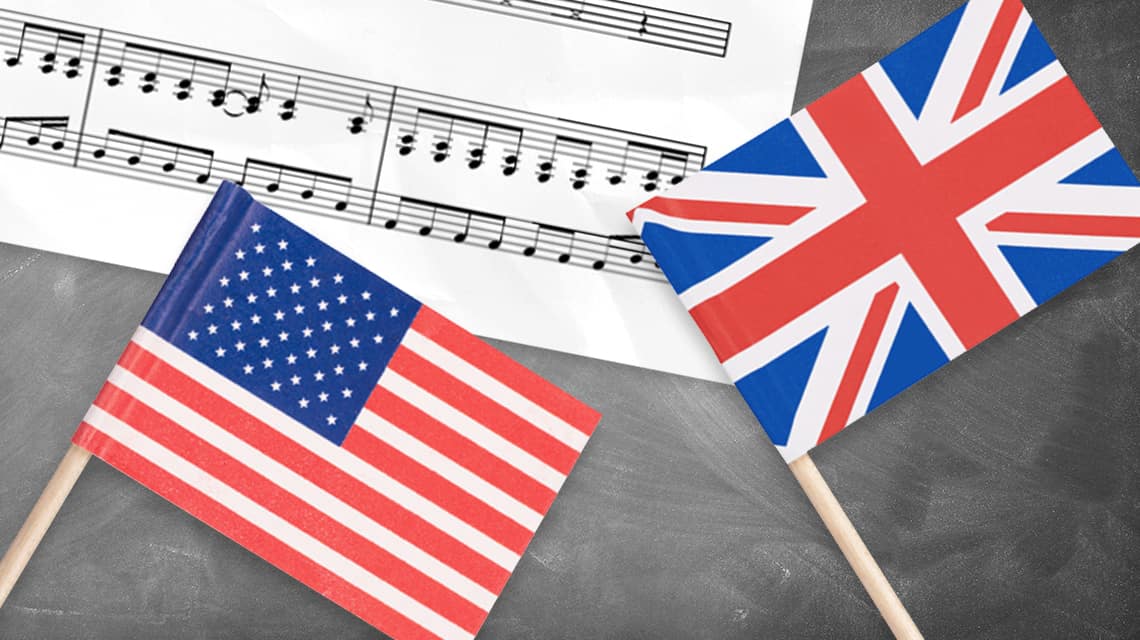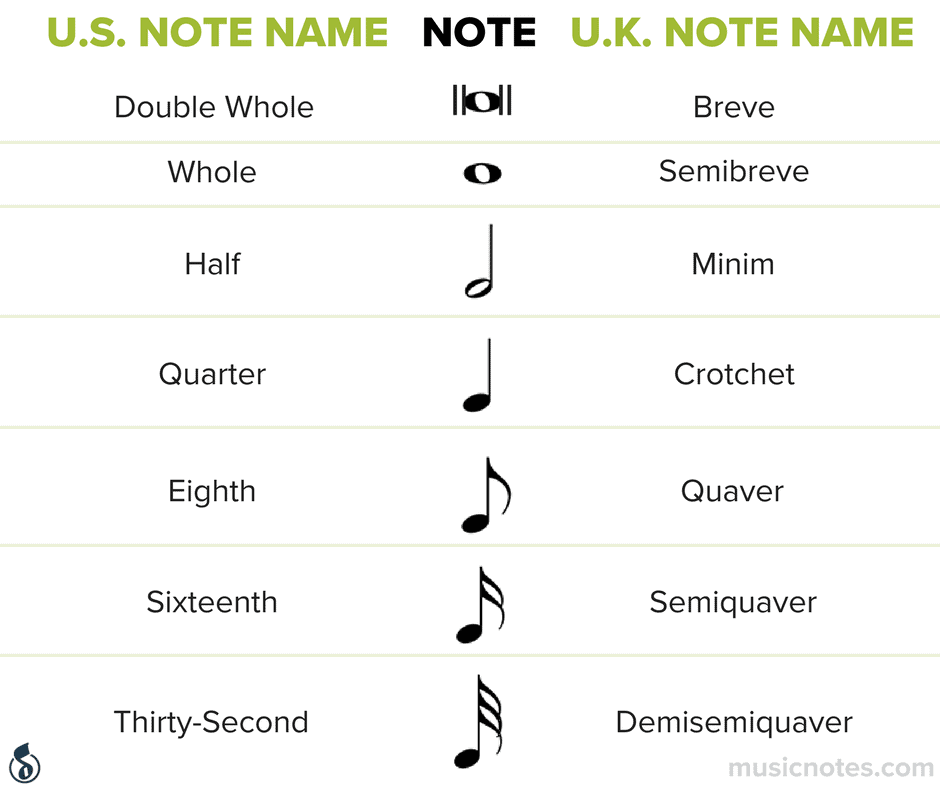Musical Note Names in the U.S. and U.K.
Have you ever come across the word “crotchet” in music terminology and were really confused on what it means? Or maybe you’ve been stumped by “thirty-second note” and “quarter rest.” Our guess? You have been getting musical terminology from the U.S. mixed in with musical terminology from the U.K.

Have you ever come across the word “crotchet” in music terminology and were really confused on what it means? Or maybe you’ve been stumped by “thirty-second note” and “quarter rest.” Our guess? You have been getting musical terminology from the U.S. mixed in with musical terminology from the U.K. Hey, it happens!
Yes, there are a few minor differences between U.S. music terminology and U.K. music terminology, and we’re here to clear the air on all the quaver confusion (and no, we’re not talking about the delicious cheesy crisps.).

A Handy Chart Explains It All!
The biggest difference comes in the way that each country labels their note names. We put a chart together so that you could see the differences side by side. A few of these might ring a bell for you, but if you’re seeing some names for the first time, we recommend that you get these worked into your brain’s encyclopedia of music knowledge!

A Brief Overview of the Long History of Musical Note Names
Notes in the U.K.
The U.K. system of naming musical notes started in the 13th century with only two notes: Long and breve, which is Latin for “short.” As time went on and musical notation became more precise and complex, the need for additional symbols and names became apparent.
Later that century, the semibreve made an appearance, as did the precursor to the time signature. At the beginning of a musical piece, composers would include a symbol representing the number of semibreve in a breve. The minima(minim), from the Latin word “minimum,” came onto the scene in the 14th century. Although the minima was presumed to be the shortest note possible, the crotchet, worth half a minim, arrived. Still not short enough, the crotchet was divided again in the 15th century into the fusa and semifusa, which were renamed a squaver and semiquaver.
And so on it goes. It’s worth noting, too, that over the years the breve actually became slower, so that more rhythmic complexity might be added.
Notes in the U.S.
Musical education in the Colonial Era would have not been readily available, although music was an integral part of the life of the community. Colonists, and later, U.S. citizens, relied on rote memorization and tradition to take part in musical experiences at church, in the community and at home.
Musical publication emerged as an industry in the 1780s, and music educators decided to use a mathematical system for the names of musical notes. Americans wanted children to learn hymns and Psalms quickly. These pieces were primarily composed as four beats per measure, and so the American “whole note” lasts for a whole bar, with other notes subdivided as fractions of that whole.
Visit our infographic: Take a Quick Trip Through The History of Sheet
Connect Through Music
Though these are only examples of terminology from the U.S. and U.K., they definitely have global impact. These two different methods of note-naming are two of the most popular methods in the world!
You never know when a new musician is going to cross your path, but wouldn’t it be cool if you spoke the same musical language? We think so!



